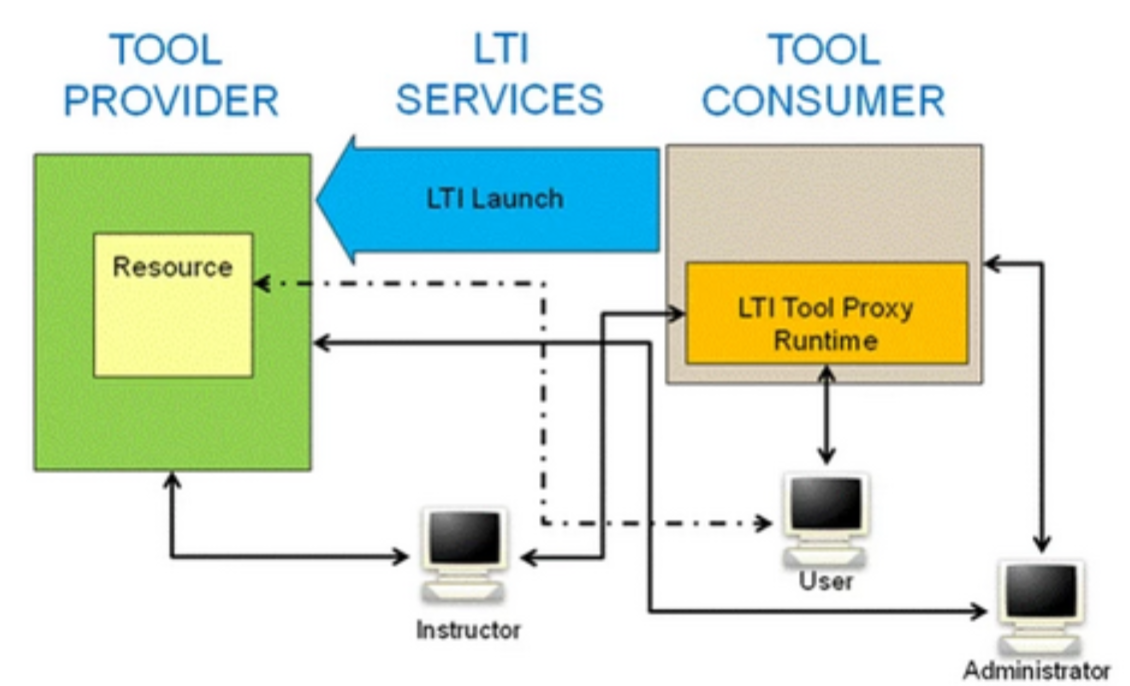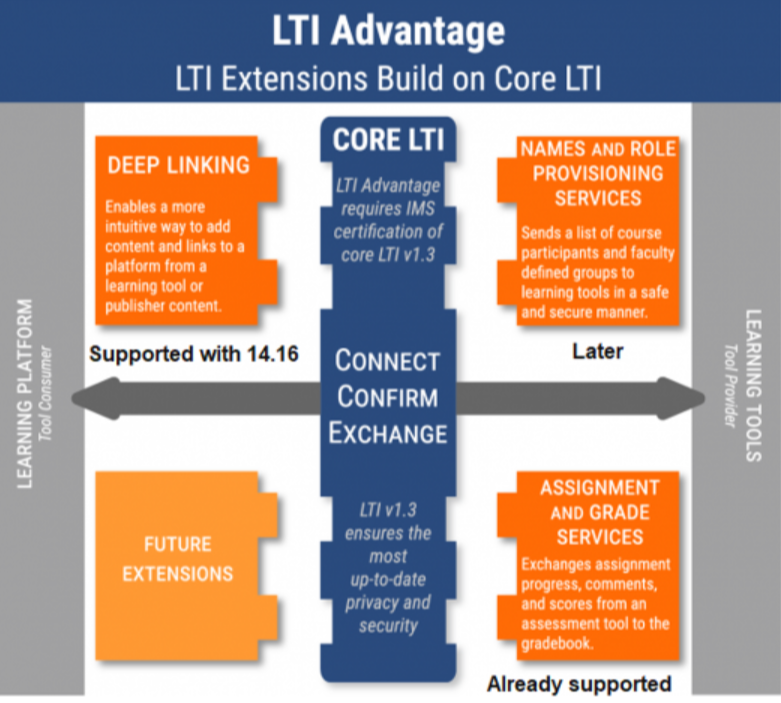External Tool (LTI)
Learning Tools Interoperability is a specification developed by IMS Global Learning Consortium.
LTI stands for "Learning Tools Interoperability". The "external tool (LTI)" media type allows the integration of external media ("tool") which are provided by a provider ("tool provider"). The learning platform functions as a "tool consumer" which accesses the external medium.
LTI is a widely adopted standard that simplifies the process of integrating third-party learning tools into your Learning Management System (LMS). It specifies the guidelines for software developers to ensure that both the LMS and the learning tools are compatible.
The term "learning applications" has a broader scope than traditional learning content focused standards and specifications like SCORM or AICC. Learning applications can be anything from Open Educational Resources (OER) repositories, e-books, interactive assessments, chats and community tools, virtual labs (e.g., for chemistry or physics) to Dropbox and Microsoft Office 365 applications.

Goals and Benefits
Embed External Learning Applications
Facilitating the LTI Tool Consumer interface enables imc customers to embed external learning applications (LTI Tools) in courses delivered via imc Learning Suite and thus offers access to various external media repositories.
Single Sign-on (SSO)
LTI also offers a single sign-on (SSO) feature, which enables employees to log into the learning tools directly from imc Learning Suite. This eliminates the need to remember separate login credentials for each tool. Once a user logs into imc Learning Suite, they can access the tools effortlessly.
Various Extension Possibilities
The tool providers take care of hosting and provisioning of the delivered services by itself so that this service can be used without or very limited internal IT involvement.

LTI Advantage (Non-comprehensive List)
Core LTI (v1.3) in the center underscores “Connect,” “Confirm,” and “Exchange” to ensure secure interoperability.
Deep Linking (top-left) for enabling direct content or link insertion from external tools into the learning platform.
Names and Role Provisioning Services (top-right) provides secure transmission of course participant data and group settings (currently not supported)
Assignment and Grade Services (bottom-right) facilitates two-way exchange of assignments, feedback, and grades between tools and the platform.
